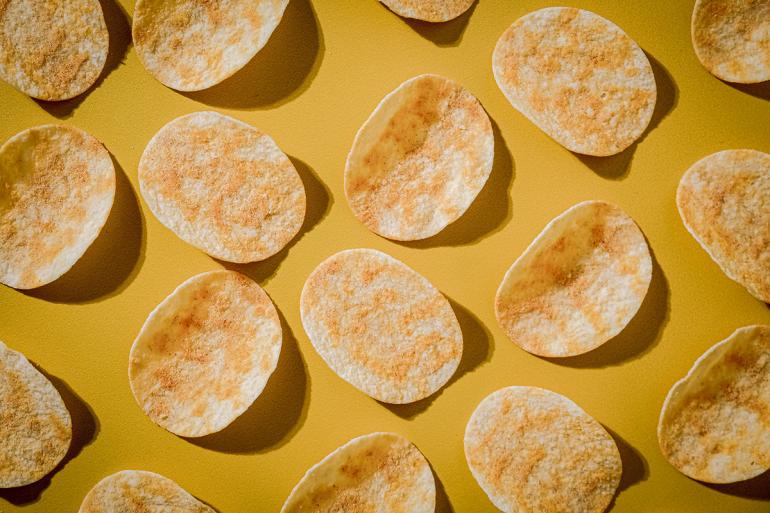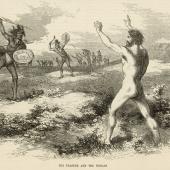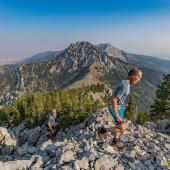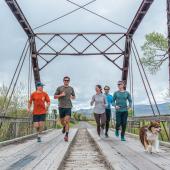The Gas-Guzzling Body
On Training with Pringles and Powerade.
Up until a couple of years ago, I believed runners were a subspecies of some sort of mutant beast—half prehistoric animal, half futuristic robot. In my mind they ran all day and all night, consuming little food or water. They were engineered to run endlessly on nothing more than energy gel packets and protein shakes.
Thanks to this delusional mindset, I trained for and ran my first (and only) marathon two years ago with dozens of caffeinated gel packets, sucking back the glue-like goo with disgust, and suffering through hunger pangs and mental images of cheeseburgers and milkshakes. How did real runners do this day after day?
Through research and more training experience, I have found that every runner marches to the beat of a different drum. What works for one runner may not work for another, and what one doctor recommends another may criticize. Some runners stick solely to the gel packets, while others make full turkey sandwiches for the trail, or carry Starbursts or Cheetos. Ultrarunner Dean Karnazes even ordered a pizza on a long-distance race. I have learned that runners can eat almost anything on the trail, as long as they use caution and calculation.
Do You Want Fries With that, Iron Man?
Curious about what to eat before and during a long-distance run, I bribed my former professor with a beer so I could ask him a few questions about running. Dr. Eric Austin, graduate professor of Public Administration at MSU, has completed four Ironman events, run numerous 50-mile and 50k races, and continues to race many full-trail marathons. He laughs when I ask what I should eat while training and responds with, “I’ll tell you what not to eat.”
When Austin was in grad school, he worked at a bike shop for 30 hours a week and trained for his first Ironman for 22 hours a week. A typical day consisted of a morning 10-mile run, an 11-hour work day accompanied by several pots of coffee and bags of chips throughout the day, a super-sized Big Mac and fries for lunch, and a crunchy Taco Bell special at the end of the night, with some studying thrown into the spare hours. With all of the junk food, “I was still losing three to four pounds a week with all of the training,” Austin marvels. But eventually he got smarter about his training and educated himself on the importance of sugars, proteins, carbs, and all the necessary nutrients an athlete needs.
Give Us this Day Our Daily Carbs
Overall, Eric lives a very healthy lifestyle without being too steadfast and rigid with his diet, and rolls his eyes at the mention of diets like Atkins and South Beach. He enjoys a good mix of protein sources like chicken, cottage cheese, plain yogurt, and small amounts of red meat and eggs to strengthen muscles and prevent injury. “And,” he adds, “I am a big fan of carbs,” despite the hype against them, like pasta and bread as sources of healthy glucose for sustained energy. But he tries to stay away from refined or processed sugars because they are stripped of their nutrients and left only as an instant dose of carbohydrates, causing a sugar spike and crash. While carbs are a huge part of most runners’ diets, athletes need to be able to differentiate between incorporating healthy carbs—like whole grains, fruits, and vegetables—into their daily diets, and obsessive “carbo-loading.” (All-you-can-eat fettuccine at Olive Garden four nights a week? I’m training, I swear.)
Putting Gas in the Tank
In the simplest terms, nutritionist Sunny Blende, M.S. says that sustaining energy on a long-distance run is simply “getting gas into the car.” She says that ultramarathons—50k, 50-100 miles, and beyond—“are an eating and drinking contest with a little exercise and scenery thrown in.” Runners and non-runners alike can agree that if you are exerting energy without eating and drinking, you are going to fail miserably. It seems simple: run, eat, drink, repeat. Problems begin to arise, though, when your body refuses what you put into it, when sugars start to make you cramp, when the simple thought of another goo packet makes you want to throw up.
I asked Austin for his secrets on the trail: what to consume, and how much? I didn’t expect my question to produce a simple answer, but, surprisingly, he gave me a recipe, which I have subtly named:
The ‘I Raced Four Iron Mans: What Did You Do Today?’ Race Shake
1 part powdered sports drink
1 part powdered carbohydrate
1 part powdered protein (for richness and flavor)
A pinch of sea salt
12-20 oz. of water depending on race length and flavor preference
Other favorite race foods of Austin’s include Pringles (for the salt and the mental boost of something with real flavor), Fig Newtons (packed full of calories), and peanut-butter-and-banana sandwiches. Austin says that a lot of races will have tables of high-calorie food such as chips, candy, de-fizzed pop, and even fried chicken, but he cautions against the sugar spike—just like caffeine, you have to sustain until the finish line or you’ll crash. Once you pop, you can’t stop.
While talking to Austin, I think back to that long and painful marathon two years ago. I had only trained for four weeks, barely knew the difference between protein and carbohydrates, and stressed out over all of the “food rules”: good carbs vs. bad carbs, meat or vegetarian, gluten or gluten-free. Even though I am slightly smarter about my training, to this day I am still overwhelmed by books, talk shows, diet fads, and a new athlete every week telling me how to eat. So what’s the answer? How can we make this work without beating ourselves up in the process?
Albeit slightly over-simplified, I have found a few “rules” I’m holding onto. First, build up your energy stores, but avoid a sugar crash. Second, hydrate and replenish salts (sports drinks accomplish both of these at the same time). And finally, experiment during training and find what works best for you. Whatever diet or fad flashes through Hollywood this week, remember the old adage: you are what you eat.
This is part four of a series about training for, and (hopefully) running the Bridger Ridge Run (on August 10), by Jenny Sheets. See part one, part two, and part three.
Read more about running—from gear to fitness to trails—at outsidebozeman.com/activities/running.













